Ethiopia: WFP responds as the worst drought in a lifetime intensifies hunger
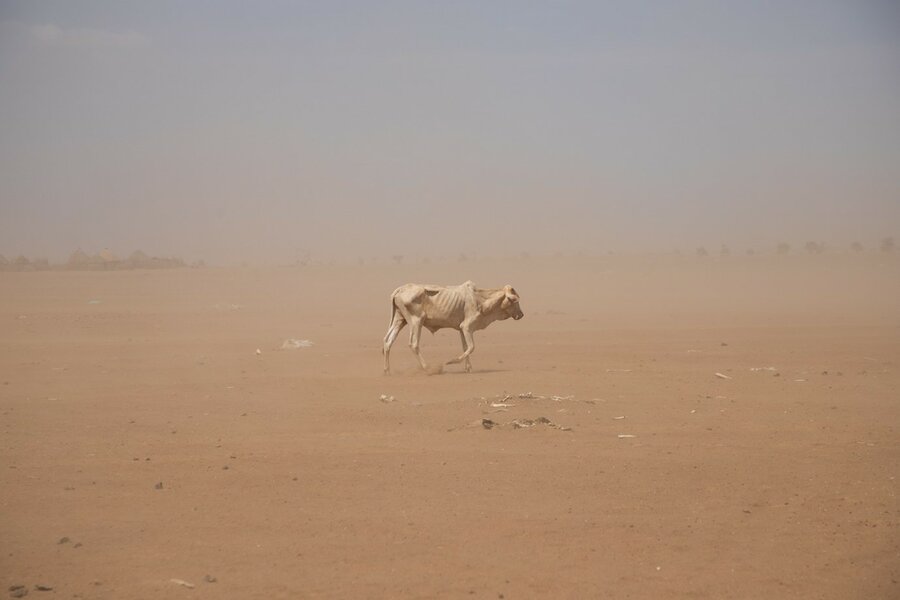
In decades past on the plains of Adadle district, in Ethiopia’s Somali Region, grass used to grow so tall that lions could hide in it, people say. Not anymore.
Over the past four months, community hubs in the district have been deserted; more than 80 households have left their homes in search of water. That is what Hana has done and it’s not her first such migration. This time around, however, the 49-year-old's cattle are too weak to stand let alone travel in the 40°C heat.
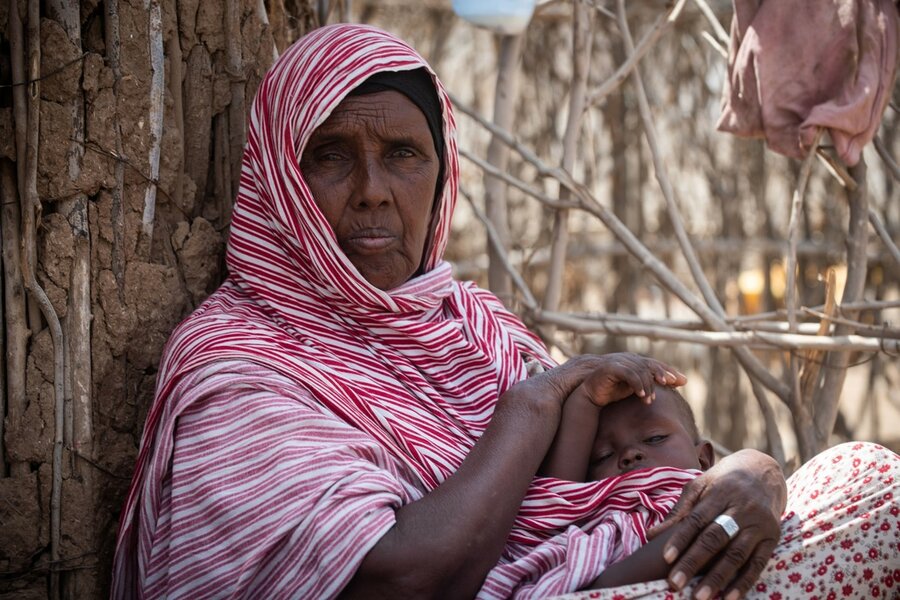
This drought, which threatens 13 million people across the Horn of Africa, has already wiped out 17 of her cows. Now she only has five – a devastating reality for a pastoralist. (Pastoralists differ from farmers in that they grow food for themselves, but their entire livelihood is derived from raising and trading in livestock rather than produce.)
In any event, Hana is resigned to staying put with the seven children she is the sole caregiver for. “Whatever happens, happens – but we cannot move,” she says. “We are forced to stay here and focus on what little we can do to care for our cattle, and hope that we survive.”
Normally, Hana and her family grow enough grain, primarily maize, to sustain themselves all through the three-month dry season – but over the past few years they’ve only been able to produce enough to last a few weeks. When one poor rainy season is followed by another, for years on end, it’s impossible to fully recover.
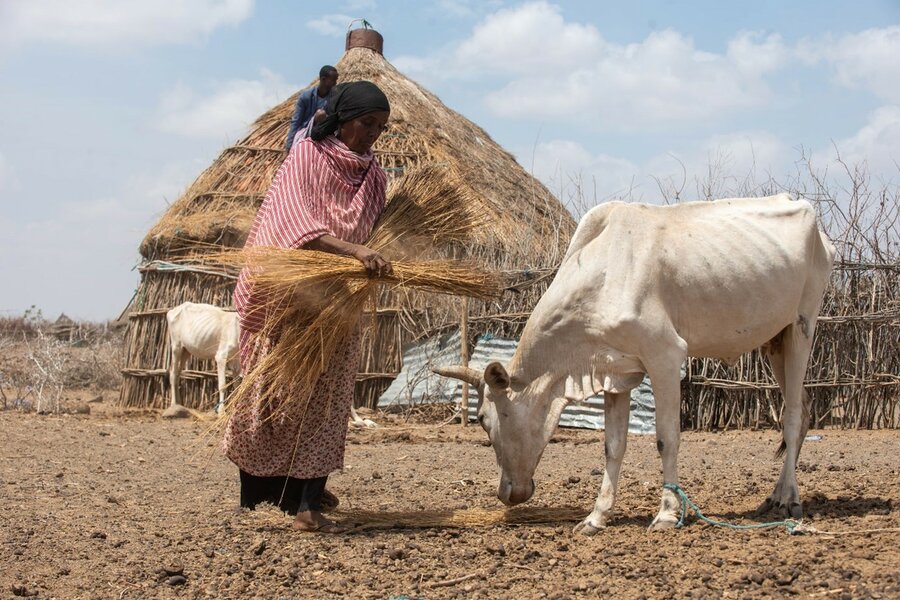
To keep her remaining animals alive, Hana has no choice but to feed them straw plucked from the thatched roof of her home. Without money to buy fresh fodder, this is all she has left to provide them. “It’s barely enough to keep them alive – they haven’t been able to produce milk in over a year,” she says.
Besides providing emergency food assistance to those affected by drought in the Somali Region, the World Food Programme (WFP) provides microinsurance to pastoralists like Hana to protect their livestock from climate extremes such as drought.

More than 25,000 families in the region, accounting for 90 percent of people whom WFP is supporting with the insurance, received a payout in late December to help them cope with the drought’s devastating impact. In total, US$900,000 was distributed to the worst affected.
Hana pooled her US$35 payout with her neighbour's to buy 10,000-litres of water – a top priority for those who are unable to migrate.
Down the road from Hana lives Abdulahi, who throughout his 70 years has watched traditional methods of rainfed agriculture become obsolete as the rainy seasons become ever shorter and weaker.
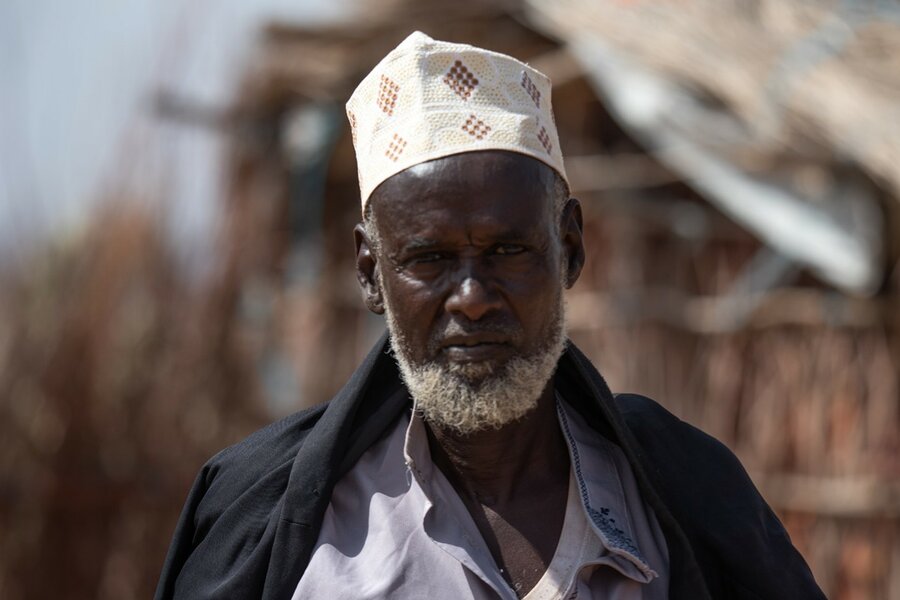
“The climate’s changed, weather patterns have changed,” he says. “We know this is contributing to the drought that we are experiencing.”
Every year the Somali Region’s dry season is hotter and drier than the last. This means that families could go from having seven animals one year to three the next year – inching closer and closer to losing it all.
Abdulahi looks around and laughs when asked about the number of animals he has left. “Well, depends on if you count that cow,” he says. “He’ll probably be dead tomorrow – can’t stand anymore and has been suffering under the hot sun for days.”
Floods threaten lives and livelihoods in South Sudan
In October, Abdulahi began to move his family of 16 from his village closer to the river 7km away, to have access to water. Forced to adapt to the changing climate, he learned new irrigation techniques, which he is now funding with the recent payout from WFP-supported insurance.
He used the money from the payout creatively: to buy fuel for a small generator that pumps water from a stream to irrigate a plot of land to grow fodder for his livestock.
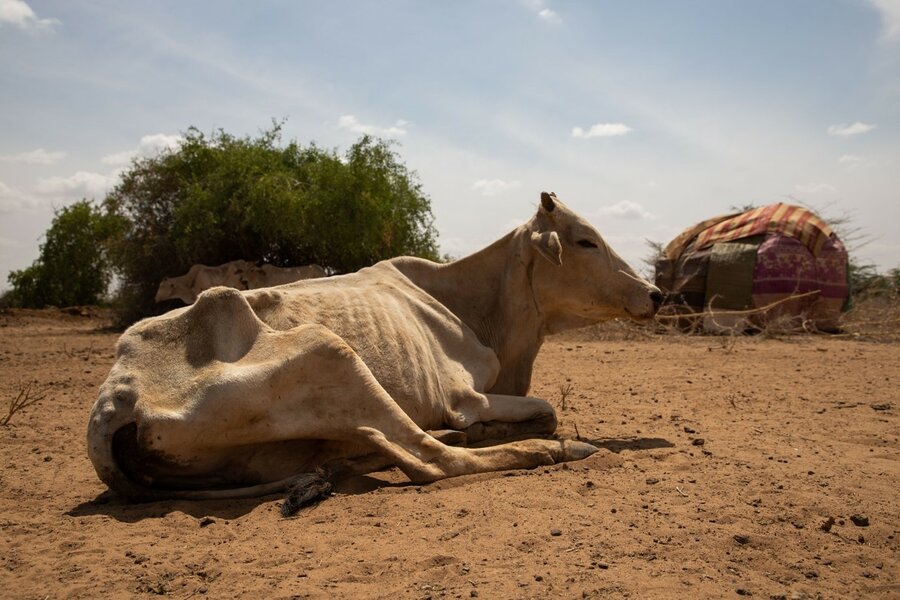
With thanks to funding from Sweden and Denmark, WFP injects support at times of peak need during the dry season to make sure livestock can survive. But as the climate crisis makes it more and more difficult for pastoralists across southern Ethiopia to grow food and care for their livestock, new long-term solutions are needed.
With more funding, WFP would be able to build on the work it is already doing to change lives in the region such as facilitating early warning systems; cash transfers to help pastoralists prepare for climate shocks before they hit and school meals programmes for children whose families have been affected by drought.

WFP has already supported 12,000 pastoralists with seed sand fertilizer as well as trainings in small-scale, drought-resistant agricultural techniques and entrepreneurial skills to help them build businesses and diversify their livelihoods.
In the face of bigger and more frequent climate emergencies, such activities are critical and the cheapest way for WFP to save the lives and livelihoods of pastoralists in Ethiopia. To expand its response across the Somali, Oromia and Southern Nations, Nationalities and Peoples regions, WFP urgently needs US $219 million – this way it can ensure pastoralists like Hana and Abdulahi don’t slip further into food insecurity.
Learn more about WFP's work in Ethiopia



